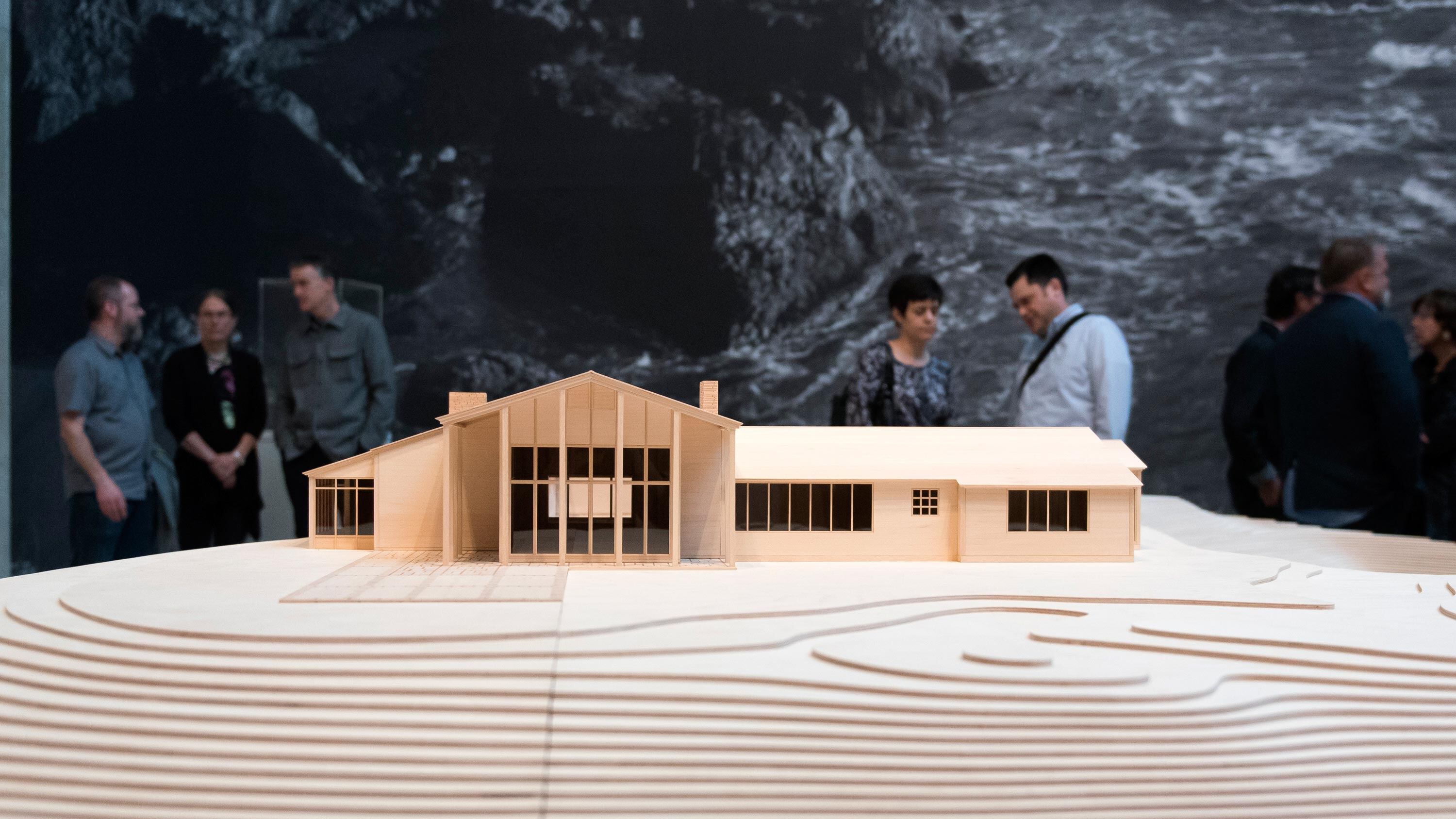If John Yeon had his way, Timberline Lodge would be a very different place.
In 1934, none of the 24-year-old Portland architect's designs had ever been built. Somewhat presumptuously, he submitted a design for a ski lodge that the Depression-era Works Progress Administration planned to build. Yeon's plan was too expensive, so the WPA went instead with L.A.-based Gilbert Stanley Underwood's design for what is now Timberline Lodge.
A model of the would-be Timberline Lodge is displayed near the beginning of the Quest for Beauty, the Portland Art Museum's new retrospective of Yeon's work. It's a relief the WPA went with Underwood's design: Yeon's is a sleek, coldly modern structure with an odd, curved shape, resembling a building you'd come across in a bad dream.
But that early misstep is in no way emblematic of the rest of Yeon's career. Yeon wasn't terribly prolific, but the buildings he did design were equally ambitious and warm, highly detailed and at the forefront of mid-century American modernism.
His legacy as a landscape architect and conservationist is just as noteworthy. He designed the Shire, a natural viewing area of Multnomah Falls across the Columbia River. He orchestrated dune reconstruction along the Oregon Coast. He bought Chapman Point in Cannon Beach to preserve it from development. And he atoned for his early expensive design plans by pioneering the use of plywood as a cheap, external building material during the Depression.
Nearly all of Yeon's built designs are in Oregon, so it makes sense that Portland Art Museum is making a big deal out of Quest for Beauty. There are two parts to the exhibit: half of it shows work from Yeon's private art collection, the other half displays models, blueprints and photographs of houses and landscapes that Yeon designed, including the ill-fated plan for Timberline.
The immense scale of the exhibit is obvious from the main entrance, where there's an enormous floor-to-ceiling photograph of Chapman Point. There's also a large model of the 1937 Aubrey Watzek House, the first of Yeon's designs to actually get built, and one of his most spectacular.
From there, the exhibit branches off. It's unwieldy, and feels like two tenuously connected exhibits. Still, it would be a missed opportunity not to display pieces from his extensive collection. There are incense holders from China and Korea that are shaped like birds, baroque clocks and china plates painted with coat of arms.
The section that displays Yeon's own work would be a fulfilling exhibit on its own. It's beautifully laid out and thoughtfully curated. Partitions depicting large-scale photos of Yeon's work divide the space according to his stylistic range.
Quest For Beauty presents a reasonably compelling case that Yeon not only deserves regional appreciation but status as a national visionary. A photograph of the West Hills Watzek House, with its cabin-like roof and Mount Hood in the background, is referred to as the epitome of American Modernism. Models of a plywood house demonstrate a window ventilation system that is basically early sustainable architecture, and his landscape-responsive designs are referred to as on-par with, but wholly distinguishable from, those of Frank Lloyd Wright.
There are also photographs of the Columbia River Highway, which was designed by Yeon's father, John B. Yeon. Not only would the younger Yeon go on to design roads himself, but you can see throughout his designs a desire to create something as simple yet expansive as a scenic highway.
The best example of that desire might be the Jorgensen house. Located in the West Hills, it's not his flashiest work. The design now seems ubiquitous and retro-modern: large, contemporary lodge windows and an expansive, single-level layout that contours the landscape, painted in a dark blue that harmonizes with the colors of the forest. Its most unusual feature is a long, covered walkway that connects the main house to the garage.
The structure itself isn't particularly spectacular. Combined with the view of the landscape, the walkway becomes opulent.
It's that sense for both scale and subtlety that Quest For Beauty doesn't quite live up to. But, to be fair, that's a pretty high standard.
SEE IT: Quest for Beauty is at the Portland Art Museum, 1219 SW Park Ave., portlandartmuseum.org. Through Sept. 3. $15.99-$19.99.
